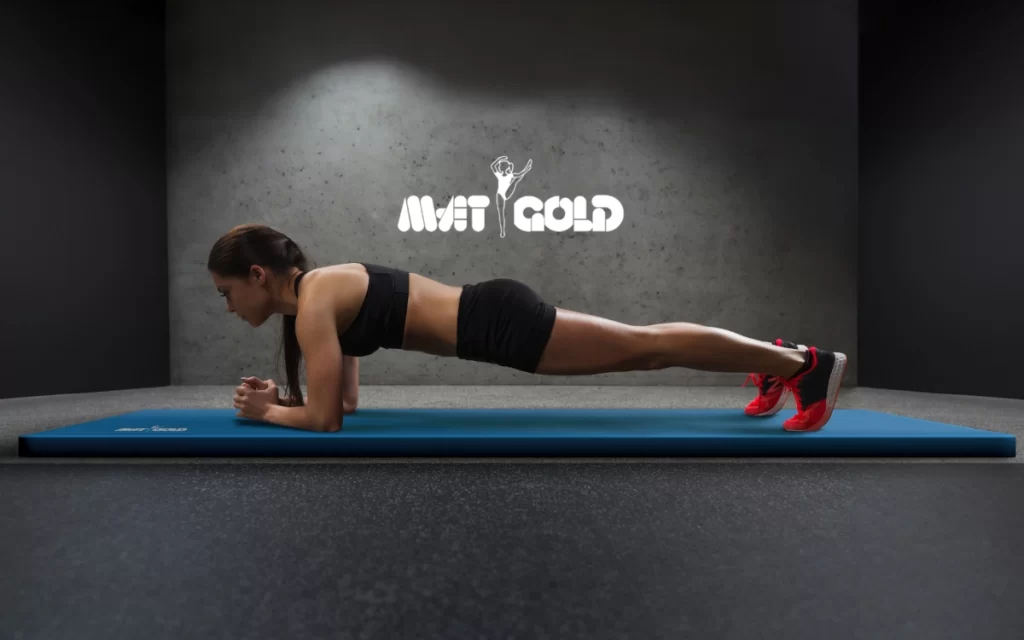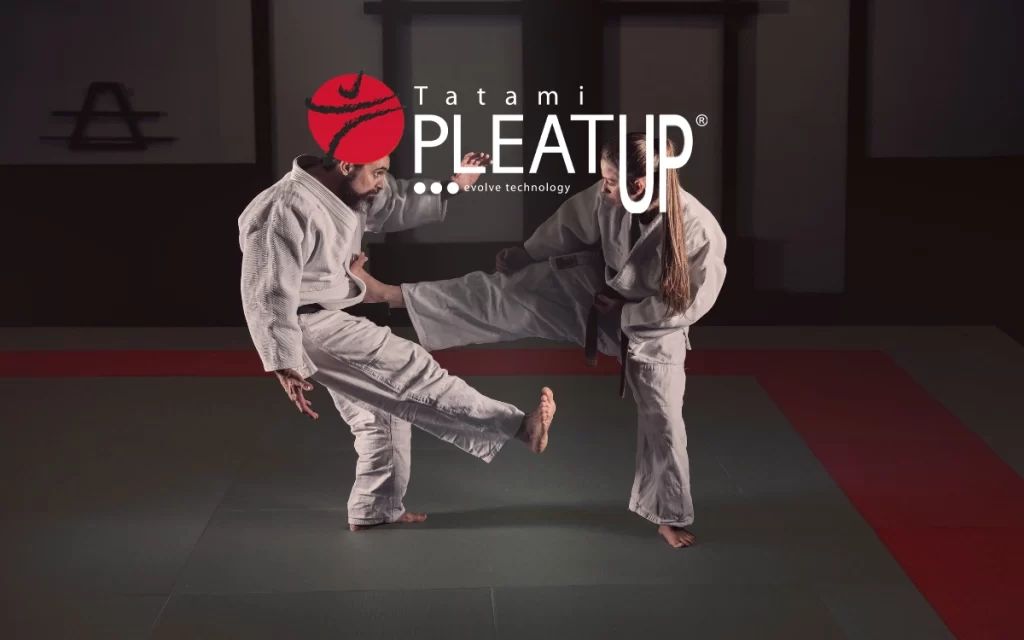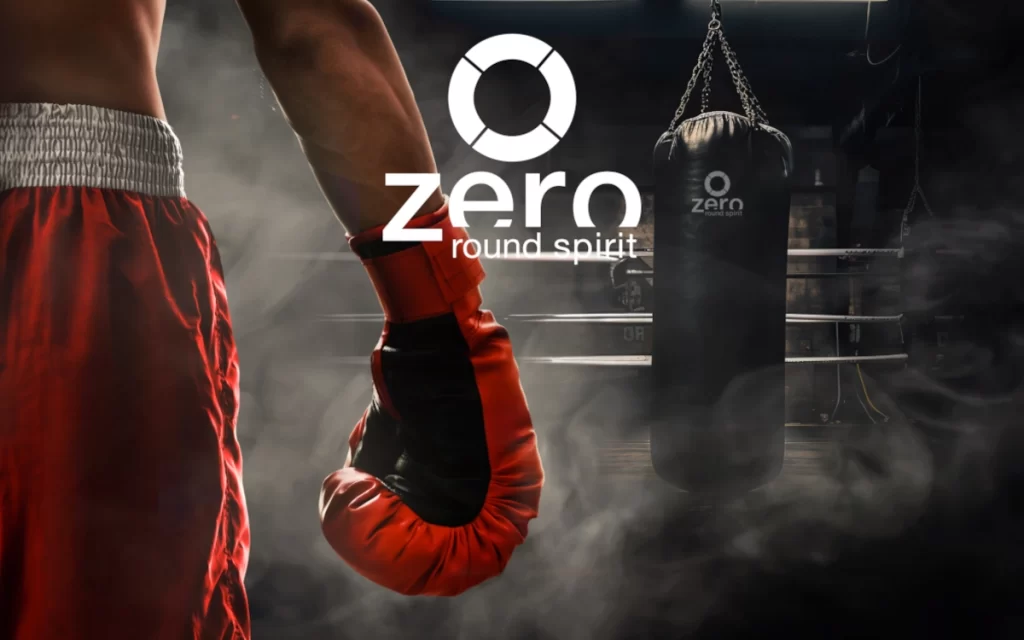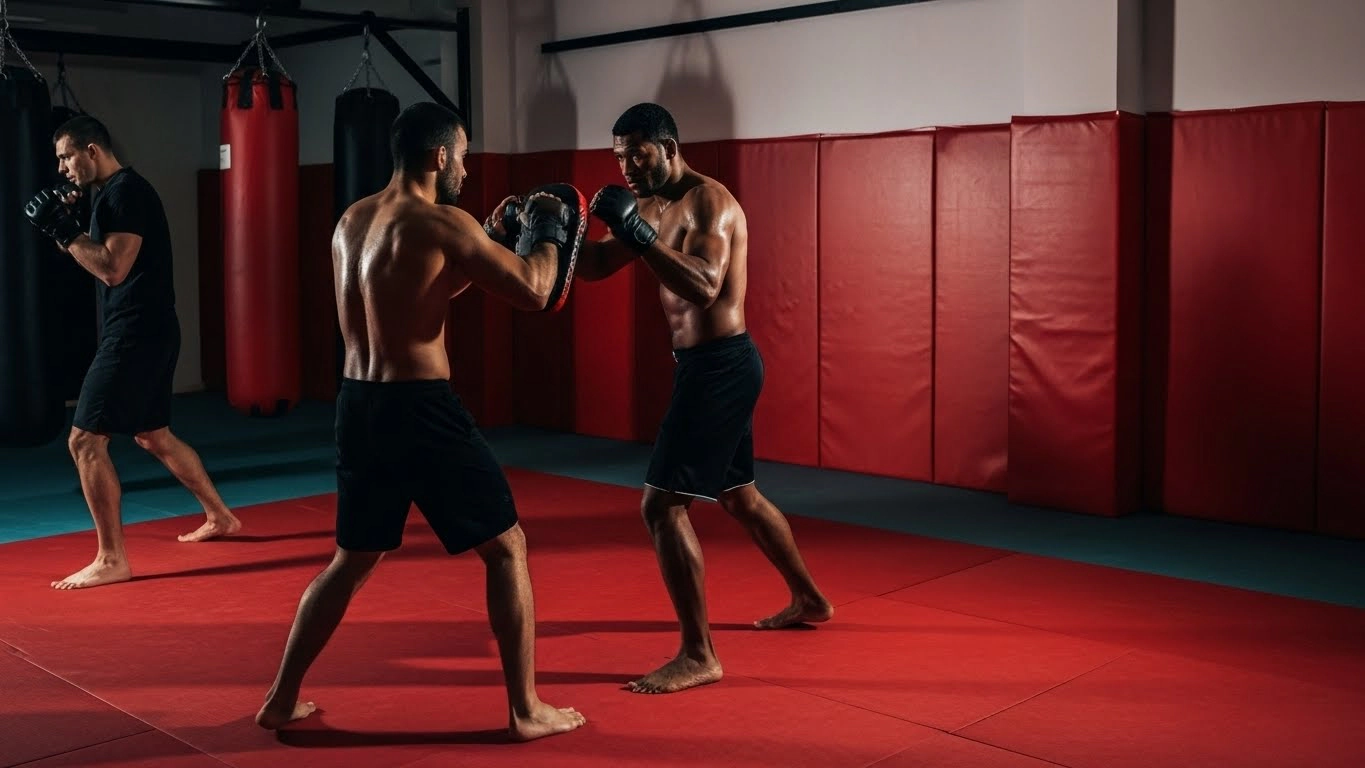How to Open a Martial Arts Gym: The Ultimate Guide
Open a martial arts gym It requires planning and dedication, but can be extremely rewarding. This detailed guide will help you navigate through the various steps needed to create a successful gym, from initial conception through operational management.
Content index
From market evaluation to growth and development
Evaluating the Martial Arts Market
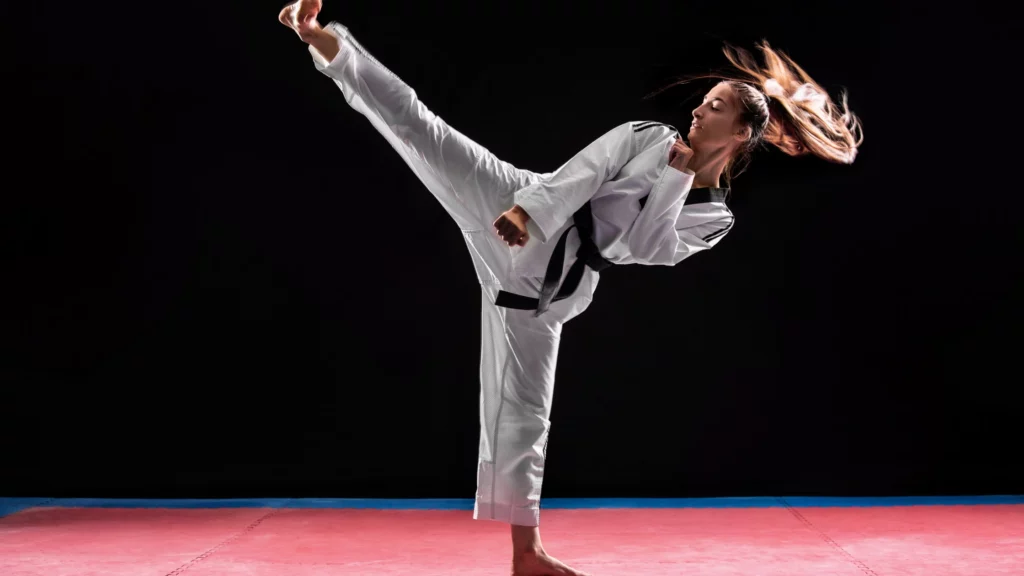
To ensure the success of yours martial arts gym, it is crucial to analyze the local market in depth. Here's how you can proceed:
Assessing Local Demand
Understanding the local market is the essential first step. Get started collecting data on the population of the area: average age, average income, prevailing interests and other popular sports activities. Use this data to assess whether there is a basis for potential customers interested in martial arts. Also, consider conducting surveys or interviews to understand which styles of martial arts appeal most to the local population, which age groups are most interested, and what times would be most convenient for classes.
Competitive Analysis
Analyzing the competition will give you a clear overview of what works and what doesn't in your chosen area. Visit existing gyms, take trial classes, and talk to instructors and members to get direct feedback. Notice which classes attract the most people and what additional amenities might be appreciated by customers. Also observe the environment, L'equipment and the marketing methods used. This will help you identify strengths to emulate and areas of weakness to improve.
Finally, consider the unique factors you might introduce into your gym: e.g offer martial arts styles not yet available in the area, specialized programs for specific age groups such as children or seniors, or classes that integrate martial arts with other forms of fitness to appeal to a broader audience.
By combining an in-depth understanding of local demand with a detailed competitive analysis, you can place your martial arts gym to have maximum success, satisfying the needs of the market and distinguishing yourself from other centers in the area.
Developing a Business Plan for a Martial Arts Gym
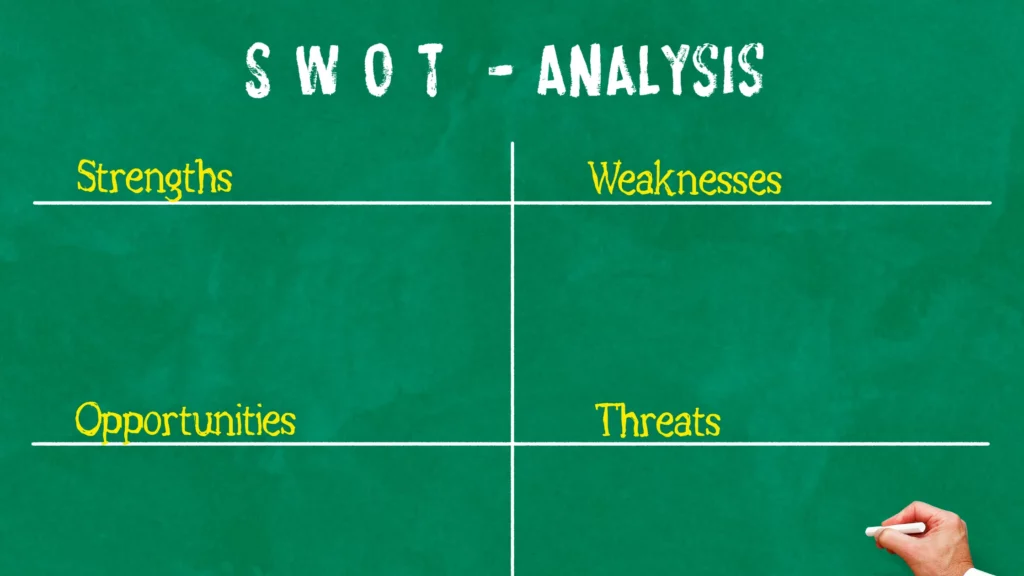
To turn the idea of opening a martial arts gym into a successful reality, it is fundamental develop a robust and detailed business plan. Here's how to articulate the different components of this plan:
Definition of Vision and Mission
Your gym's vision and mission should reflect not only your business goals, but also the cultural and social contribution you wish to make to the community. The vision it could be something like “Create a martial arts center of excellence that promotes physical and mental health in our community“. The mission it could instead be expressed in more concrete terms, such as “Offer a safe and supportive environment where people of all ages can learn and practice various martial arts with qualified and passionate instructors“. These statements will guide all business decisions and help keep the organization aligned with its core values.
SWOT analysis
Strengths: Identify what distinguishes your gym, such as strategic location, highly qualified instructors or unique course offerings.
Weaknesses: Recognize limitations, such as limited budget, low visibility of the location or lack of industry recognition.
Opportunities: Explore growth opportunities, such as population expansion in your area, growing interest in health and wellness, or partnerships with local schools and organizations.
Threats: Consider potential challenges, such as intense competition, changes in local regulations or an unstable economy that could affect consumers' spending ability.
Budget and Financial Forecasts
Creating a detailed budget is essential to ensuring the financial sustainability of your gym. The budget should include:
- Start-up costs: Rent of the premises, any renovations or modifications, purchase of initial equipment, expenses for licenses and permits.
- Operational costs: Staff salaries, utilities, equipment maintenance, marketing and insurance.
- Financial forecast: Estimate your revenue based on various customer growth scenarios and monitor your cash flows regularly for the first three years. Consider both best-case and worst-case scenarios to prepare for unexpected events.
How Much Money Does It Take to Open a Gym?
The initial investment to open a martial arts gym varies widely depending on various factors. For a small gym in a medium-sized city, investments can start from around 10,000 euros for them essential equipment and start-up costs, arriving up to 100,000 euros or more for one Larger gym with top of the line equipment and extensive renovations of the venue. It is essential to factor these costs into your financial plan to ensure you have enough capital to cover initial expenses and keep your gym operating until it becomes profitable.
Choice of location to open a gym
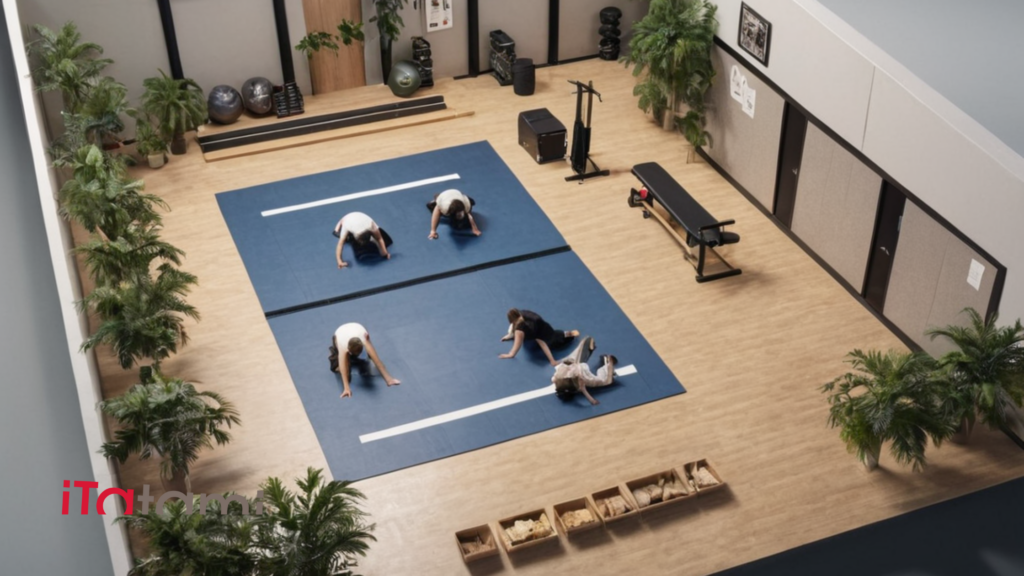
The selection of right location it is one of the most crucial aspects for the success of one martial arts gym. Here are some essential considerations and practical steps for choosing the ideal location:
Strategic position
Choosing a location that is easily accessible to your target customers is crucial. Consider the following factors:
- Visibility: A visible and easily identifiable place attracts more passive customers. A location on a main street or in an area with high foot traffic can make a big difference.
- Accessibility: Make sure the gym is easily accessible by public transport and has parking. Easy access is especially important in dense urban areas.
- Proximity to the Target Demographic: Choose a location close to schools, offices or residential neighborhoods that match the demographic profile of your ideal customer, such as young professionals, families or university students.
Dimensions and Layout of the Space
The size of the venue should be adequate to accommodate all planned activities, including areas for individual and group training, changing rooms, reception areas and offices.
- Adaptable Space: Look for a space that can be easily adapted to the specific needs of a martial arts gym. This may include for example high ceilings for equipment such as punching bags. Make sure you have also a layout that allows easy division into different training areas.
- Expansion possibilities: Consider the potential for expansion. As your business grows, you may need more space to offer more classes or others types of training.
Conditions of the Venue
Before signing a rental or purchase agreement, be sure to evaluate the condition of the property. Always check aspects such as:
- Building Structure: Make sure the structure is solid and does not need significant repairs that could affect your budget or delay the opening.
- Safety Regulations: Check that the space complies with all local safety and accessibility regulations, including requirements for disabled people.
Finally, once you have selected a location, it is essential to negotiate the lease or purchase terms to ensure they are favorable and sustainable for your business. Consider hiring a lawyer specializing in commercial real estate to review any contract before signing it. Choosing the right location will not only influence the attractiveness of the gym, but will also have a significant impact on operational management and customer satisfaction.
Legal and Bureaucratic Requirements

Opening a martial arts gym requires you to navigate a sea complex of legal and regulatory requirements. A thorough understanding of these aspects is essential to ensure that the operation complies with the law and to avoid future complications. Here is a detailed guide to navigate through the necessary legal and bureaucratic requirements:
Licenses and Permits
Before you can open your gym, you will need to obtain all necessary licenses and permits from municipal offices and other regulatory authorities. These can include:
- Commercial License: A general license to operate a business in your locality.
- Building Permits: If you plan to make significant renovations or changes to your space, specific permits may be required before starting work.
- Security Certifications: Make sure your gym complies with all local fire safety regulations.
- Health License: If your gym offers amenities such as showers or a sauna, you may need a health license.
It is important to begin this process as soon as possible, as obtaining all the necessary licenses and permits can take time.
Insurance
Opening and operating a gym involves significant risks, so it is a must to have adequate insurance coverage to protect your business, your collaborators and your customers. Insurance policies you may consider include:
- General Civil Liability: Protects against claims for personal injury or property damage caused by your gym's operations.
- Professional Insurance: If you offer training or private lessons, this insurance can cover claims related to professional errors or negligence.
- Business Interruption Insurance: It covers loss of income and helps pay operating expenses if your gym has to close temporarily due to a covered event.
- Property Insurance: Protects equipment and other company property from damage or loss.
Consult an insurance broker who understands the specific needs of the fitness industry to ensure your coverage is adequate and compliant with local laws.
What VAT number is needed to open a gym?
To open a gym in Italy, you need to register with theRevenue Agency and obtain a VAT number. The ATECO code for gyms is usually 93.13.10 ("Management of sports facilities“), which should be used for the registration. This step is essential for invoicing, tax management and other accounting requirements.
Compliance Procedure
In addition to permits and licenses, it is important that the gym complies with all local regulations relating to health and safety, the processing of customers' personal data (GDPR if operating in the EU), and labor regulations, particularly if you are employed collaborators and instructors. You may need to consult with an attorney who specializes in business or employment law to ensure your gym is fully compliant.
Making sure you have all legal and bureaucratic requirements in order is crucial not only to avoid fines or lawsuits but also to build trust and credibility among customers and within the community. This solid foundation will allow your martial arts gym to operate smoothly and grow over time.
| Categories | Specific Requirements | Details |
|---|---|---|
| Legal requirements | ||
| Commercial Licenses | Legal business license | Necessary to operate any business |
| Permissions | Building and health permits | Requested for structural or sanitary changes to the premises |
| Certifications | Safety certifications | They include fire and plant safety checks |
| Insurance coverage | ||
| General Civil Liability | Civil liability insurance | Covers damage to third parties or property during gym operations |
| Professional Insurance | Insurance for instructors | Protects against damages resulting from professional negligence |
| Business Interruption | Business interruption insurance | Covers loss of income during forced closures |
| Property Insurance | Property insurance | Protects equipment and infrastructure from damage and theft |
Design and Setup
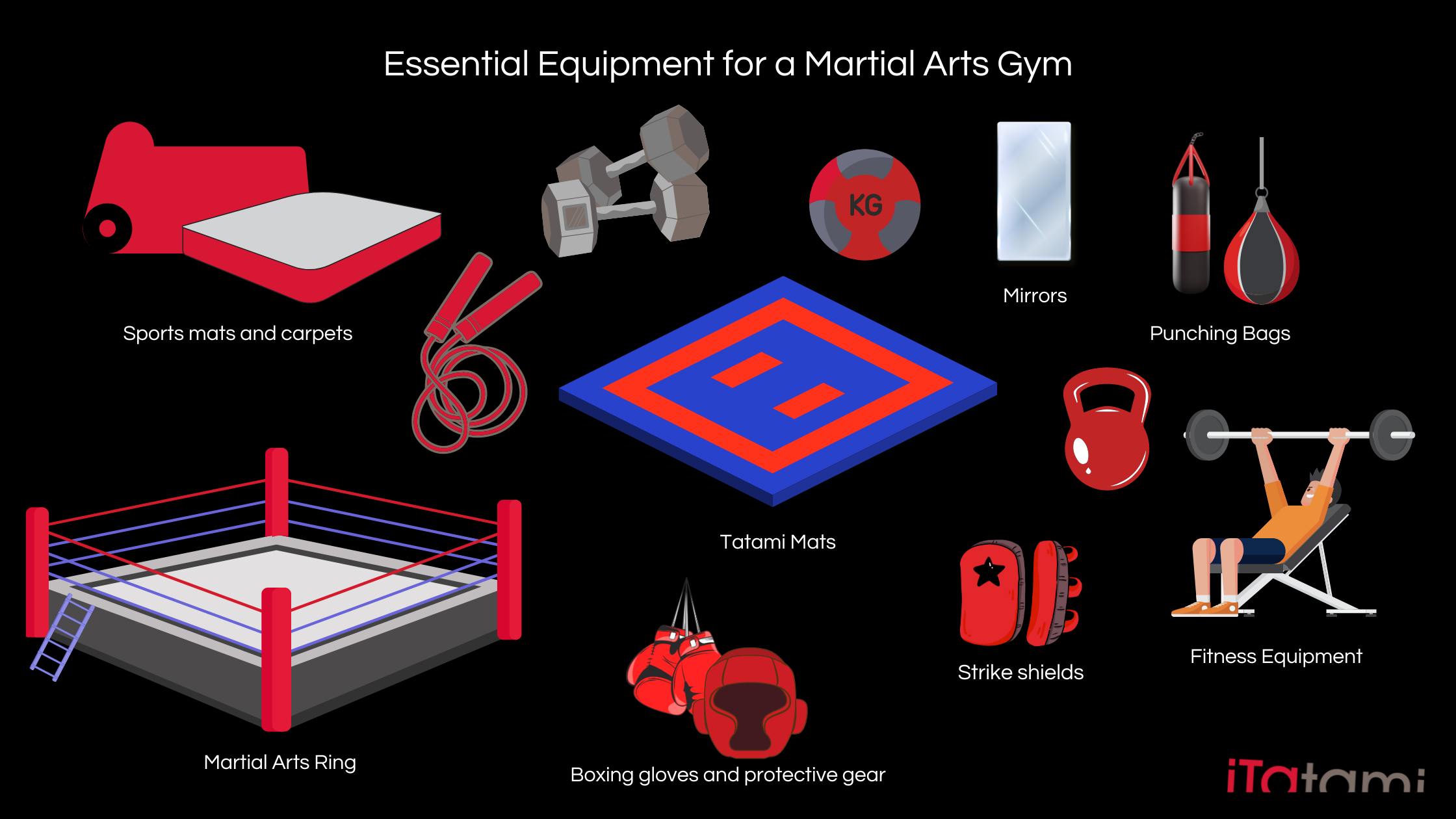
The environment of a martial arts gym is as functional as it is inspirational. This is why the choice of right equipment it must not only be practical but also strategically aligned with your brand promise. iTatami delivers equipment solutions that not only increase the effectiveness of training but also theaesthetics and safety of your gym.
Selection of Essential Equipment
Choose the equipment for your martial arts gym it goes beyond functionality. It's about investing in products that guarantee durability in time, security and overall user satisfaction. iTatami solutions they stand out in the market for several reasons:
Superior Quality
The iTatami equipment they are renowned for their superior quality. Made with high quality materials, each piece of equipment is designed to withstand intense use and guarantee maximum safety and comfort. This is essential in a sport like martial arts, where the durability of the equipment can directly influence the safety and effectiveness of training.
Innovative Design
iTatami stands out for itsinnovation in design of its equipment. Whether it's about tatami, punching bags or other specific martial arts accessories, iTatami combines functionality with modern aesthetics, creating an inspiring and welcoming environment for practitioners of all levels.
Compliance and Security
All iTatami equipment complies with the more rigorous safety standards. This not only helps prevent injuries but also ensures that your gym complies with all local and international regulations, which is essential for the longevity and credibility of your business.
Integration of iTatami Solutions
When designing your space, consider how iTatami solutions can complement and enhance the overall experience in your gym. With an extensive catalog of martial arts-specific equipment, iTatami offers everything you need to set up a high-level gym.
Discover iTatami solutions for martial arts
Incorporating iTatami equipment will not only improve the quality of the training offered but will also strengthen your gym's reputation as a center of excellence in martial arts. Investing in iTatami products means choosing a partner who understands and supports your ambitions to deliver excellence and innovation in the field of martial arts.
For further details on the optimal design and setup of a gym, we recommend that you also consult the Guidelines for Designing a Gym where we offer in-depth guidelines.
Marketing and Promotion

To ensure the success of your martial arts gym, it is essential to implement effective marketing strategies that attract and maintain a strong customer base.
Effective Marketing Strategies
- Branding: Develop a strong brand that reflects your gym's culture and values. Your logo, website design and promotional materials should clearly communicate what makes your gym unique.
- Website and SEO: Create a professional website that is optimized for search engines. Make sure potential customers can easily find information about courses, times, prices and locations.
- Social Media: Use social platforms like Facebook, Instagram and YouTube to reach and engage local audiences. Regularly publish content that showcases the classes, the successes of the athletes, training tips and special events.
- Local Marketing: Attend community events, host free workshops, and partner with other local businesses to increase visibility.
- Referral Programs: Encourage current members to refer friends and family by offering discounts or free classes as an incentive.
Use of Social Media
- Targeted Campaigns: Use social media targeting tools to reach specific demographic groups in your area who may be interested in martial arts.
- Interaction: Actively respond to comments and questions on your social channels to create an active and engaged online community.
Visual Content: Regularly post photos and videos of your workout sessions, showcasing the energetic and inclusive atmosphere of your gym.
Staff Recruitment and Training

A team of qualified instructors and support staff is crucial to the operation of your gym.
Selection and Training of Instructors
- Recruitment: Look for candidates with martial arts experience and, if possible, recognized teaching qualifications. Evaluate not only their martial skills but also their ability to teach and motivate students of all ages and levels.
- Continuous training: Offer professional development opportunities for your instructors, such as workshops, refresher courses and participation in competitions, to maintain high teaching standards.
Personnel Management Policies
- Clear Contracts: Make sure all instructors and staff have clear contracts that outline roles, responsibilities, compensation and working conditions.
- Positive Work Environment: Create a work environment that promotes collaboration and mutual respect among all staff. This helps reduce turnover and keep the team's motivation high, as well as being another strong point in the eyes of your customers.
- Periodic Evaluations: Implement a performance evaluation system to monitor the effectiveness of instructors and staff, offering constructive feedback and recognition for excellent performance.
By implementing targeted marketing strategies and building a strong team, you can ensure that your martial arts gym not only attracts but also retains a loyal customer base, promoting long-term growth and prosperity.
Daily Management
The day-to-day running of a martial arts gym requires constant attention to many operational details that affect both efficiency and customer experience.
Daily Operations
- Booking System: Implement an online booking system that allows members to book lessons easily. This system should also help you track attendance and participation.
- Equipment Maintenance: Make sure all equipment is regularly checked and maintained. Well-maintained equipment is essential to the safety and effectiveness of your training.
- Cleaning and Hygiene: Maintain high standards of cleanliness in the gym. This is especially important in an environment where people come to do strenuous exercise.
Customer Management and Service Quality
- Welcome and Support: Make sure your front desk staff is well trained to provide a warm welcome and respond promptly to any customer questions or concerns.
- Customer Feedback: Encourage regular feedback through surveys or an on-site suggestion box. Listening to and acting on customer feedback can help improve your gym's services and atmosphere.
- Troubleshooting: Establish clear procedures for handling complaints or issues, ensuring they are resolved in a timely and professional manner.
Growth and Development for a Martial Arts Gym

As your martial arts gym stabilizes and grows, it's important to think about how you can expand and develop the business further.
Future Expansion Plans
- Addition of New Courses: Consider adding new martial arts styles or specialized classes for different demographic groups, such as martial arts for kids or self-defense programs for women.
- Physical Expansion: If demand warrants it and space allows, you may consider physically expanding the gym or opening new locations in other areas.
- Partnerships and Collaborations: Develop partnerships with schools, local businesses or other fitness studios to offer cross programs or reciprocal discounts.
Innovations and Updates
- Technology: Keep up to date with the latest technologies in fitness and martial arts. Introducing fitness apps or using cutting-edge equipment can improve your customer experience and differentiate you from the competition.
- Continuous training: Encourage and support ongoing training for you and your staff. This not only improves your teaching skills but can also bring new ideas and freshness to your business.
The table below includes start-up costs, monthly income, expenses and net cash flow for each month of the first year. Here's how it could be presented:
| Month | Start-up costs | Come in | Expenses | Cash flow |
|---|---|---|---|---|
| January | 20000 | 0 | 5000 | -25000 |
| February | 0 | 0 | 5000 | -5000 |
| March | 0 | 5000 | 6000 | 1000 |
| April | 0 | 7000 | 6000 | 1000 |
| May | 0 | 10000 | 7000 | 3000 |
| June | 0 | 12000 | 7000 | 5000 |
| July | 0 | 14000 | 8000 | 6000 |
| August | 0 | 16000 | 8000 | 8000 |
| September | 0 | 18000 | 9000 | 9000 |
| October | 0 | 20000 | 9000 | 11000 |
| November | 0 | 22000 | 10000 | 12000 |
| December | 0 | 25000 | 10000 | 15000 |
This example shows how the gym plans to cover its initial costs and break even within the year. The table we hypothesized shows this data, highlighting the point at which the net cash flow exceeds zero and indicating when the business begins to generate profit.
Opening and managing a martial arts gym is a challenging undertaking which requires dedication, passion and careful management. By taking a holistic approach that covers from planning and marketing to day-to-day management and future development, you can build a thriving business that not only meets, but exceeds your customers' expectations and contributes significantly to the community. With the right strategies and resources, yours martial arts gym it can become a hub of activity, learning and personal growth for many years to come.

